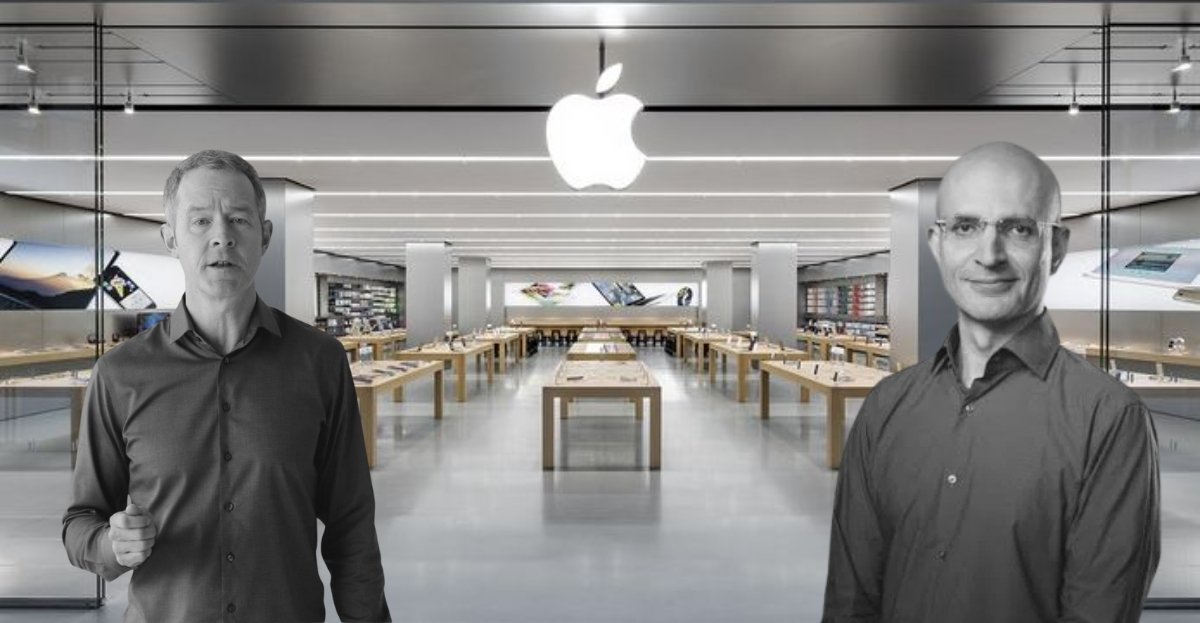A Seamless Transition at the Top
When Apple recently named Sabih Khan as its Chief Operating Officer (COO), the decision was both strategic and symbolic. It wasn’t just another executive appointment-it was a clear endorsement of internal leadership, talent cultivation, and long-term succession planning.
Unlike many companies that recruit external candidates for senior roles, Apple has long believed in nurturing talent from within. This leadership move underscores the company’s commitment to developing future leaders through robust leadership development and promoting those who deeply understand its culture and systems.
In this article, we’ll explore how Sabih Khan rose through the ranks to become Apple’s COO and what organizations can learn about internal promotion, leadership transition, and HR best practices from Apple’s approach.
Sabih Khan: The Quiet Leader Who Grew Within
Sabih Khan joined Apple in 1995 and steadily built his career over nearly three decades. Starting in operations and supply chain, he became known for his meticulous attention to detail, calm under pressure, and strategic execution. He played a pivotal role in scaling Apple’s supply chain to support its global reach while maintaining environmental and ethical standards.
His promotion to COO was not an overnight decision. It was the result of years of performance, alignment with company values, and trust built within the leadership team. This journey exemplifies the success of internal leadership programs and the value of growing leaders from within.
Khan’s story proves that consistent contributions, cultural alignment, and the right opportunities can prepare someone for executive leadership, even in the world’s most competitive companies.
Why Internal Leadership Pays Off
Companies often struggle with the dilemma of hiring externally vs. promoting internally for senior roles. Apple’s choice to elevate Sabih Khan showcases why internal leadership is a winning strategy.
Promoting internal talent allows organizations to:
- Preserve cultural continuity
- Minimize disruptions during leadership transition
- Leverage institutional knowledge
- Reinforce employee motivation and loyalty
Employees see a clear path from middle management to executive leadership, which boosts engagement. Moreover, internal promotion leads to smoother onboarding since the individual already understands systems, values, and strategic goals.
In contrast, external hires, no matter how skilled, often face steep learning curves and longer ramp-up times.
Succession Planning Done Right
Apple’s appointment of Sabih Khan is a textbook case of effective succession planning. Instead of reacting to sudden leadership exits or industry trends, Apple proactively prepares for transitions by identifying high-potential talent and equipping them with skills for future roles.
Succession planning ensures business continuity and protects organizational stability. It’s not just about replacing executives-it’s about having a pipeline of leaders ready to step in when the time is right.
Khan’s transition was seamless because he had already been managing many responsibilities tied to the COO role. Apple simply formalized what was already happening, thanks to thoughtful succession planning and long-term vision.
The Role of Leadership Development in Khan’s Journey
Leadership development played a central role in preparing Sabih Khan for his elevated responsibilities. Apple invested in his growth through exposure to global operations, high-stakes decision-making, and collaboration with top executives.
True leadership development doesn’t happen in a classroom. It happens in real-time business challenges where future leaders like Khan are given opportunities to lead major initiatives, learn from experience, and receive feedback.
Companies that take leadership development seriously see stronger internal pipelines, fewer hiring missteps, and more effective leadership transitions. It’s not about grooming clones-it’s about nurturing talent with unique perspectives, grounded in company values.
Related Posts
Internal Promotion and Its Ripple Effects
The internal promotion of Sabih Khan sends a powerful message to Apple’s workforce: hard work, loyalty, and value-alignment are rewarded. It shows employees that the company believes in their potential and invests in their future.
For organizations, internal promotion is more than just a staffing decision-it’s a strategic act of trust and validation. It encourages others in the company to step up, take initiative, and commit for the long term.
When employees believe there’s room to grow, retention increases. When they see someone like Sabih Khan rise through the ranks, they view the company as a platform for career development, not just a paycheck.
Leadership Transition with Cultural Integrity
Leadership changes often create uncertainty. But Apple managed the leadership transition smoothly by choosing someone aligned with its core values and vision.
Because Sabih Khan had already been part of the executive team, the leadership transition felt natural to employees and stakeholders. There was no major shift in strategy or culture-just a continuation of excellence.
That’s the benefit of transitioning leadership through internal promotion: it reduces disruption and maintains momentum. For a company like Apple, where brand and culture are tightly linked, such consistency is invaluable.
What Companies Can Learn from Apple’s HR Best Practices
Apple’s approach offers key insights into HR best practices that any organization can apply:
- Prioritize succession planning from mid-management levels onward
- Build robust leadership development pathways linked to real-world roles
- Embed internal leadership goals in performance and talent reviews
- Ensure transparent leadership transition strategies
- Use internal promotion to boost morale and retention
Above all, focus on values and culture when evaluating candidates for executive leadership roles. Technical skills can be taught-alignment cannot.
Organizations with strong workplace culture and development frameworks, like Apple, prove that nurturing talent from within is not only sustainable but also strategically wise.
The Future Belongs to Homegrown Leaders
The rise of Sabih Khan to Apple’s COO role isn’t just a personal success-it’s a victory for thoughtful talent management. His story shows how internal leadership, leadership development, and succession planning can align to create future-ready leaders.
For companies aiming to build resilient organizations, the lesson is clear: start developing leadership from within today. Promote people who live your values. Plan transitions before they’re urgent. Recognize that your next executive leadership star may already be in the room.
At Amazing Workplaces®, we believe that long-term success is built on intentional culture, strategy, and people. Just like Apple, your organization can inspire greatness from within.
Editor’s Note: This article presents publicly available information only as part of our employer branding insights series. It does not reflect legal opinions or endorsements related to any ongoing or future legal matters involving the organization.










